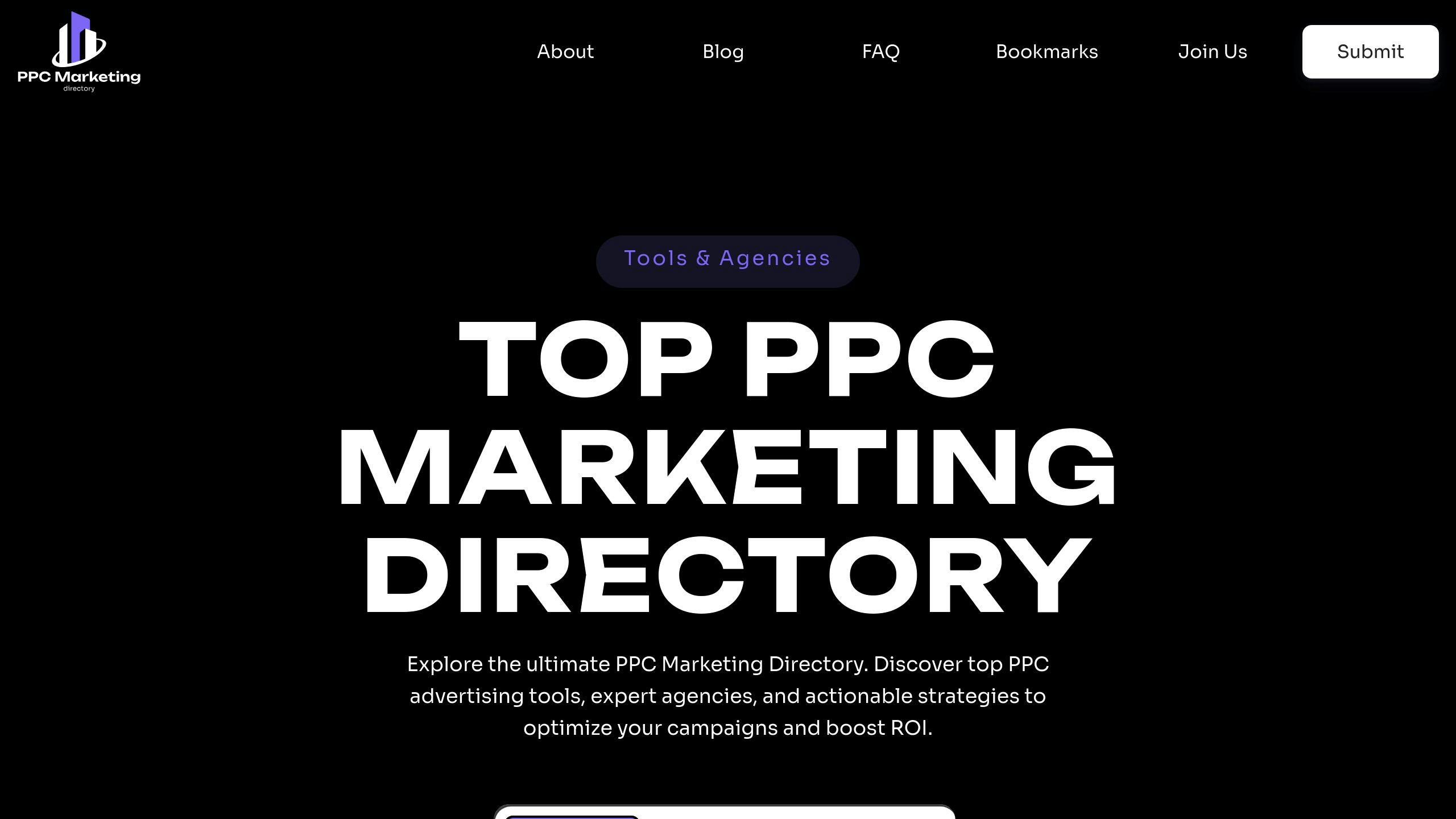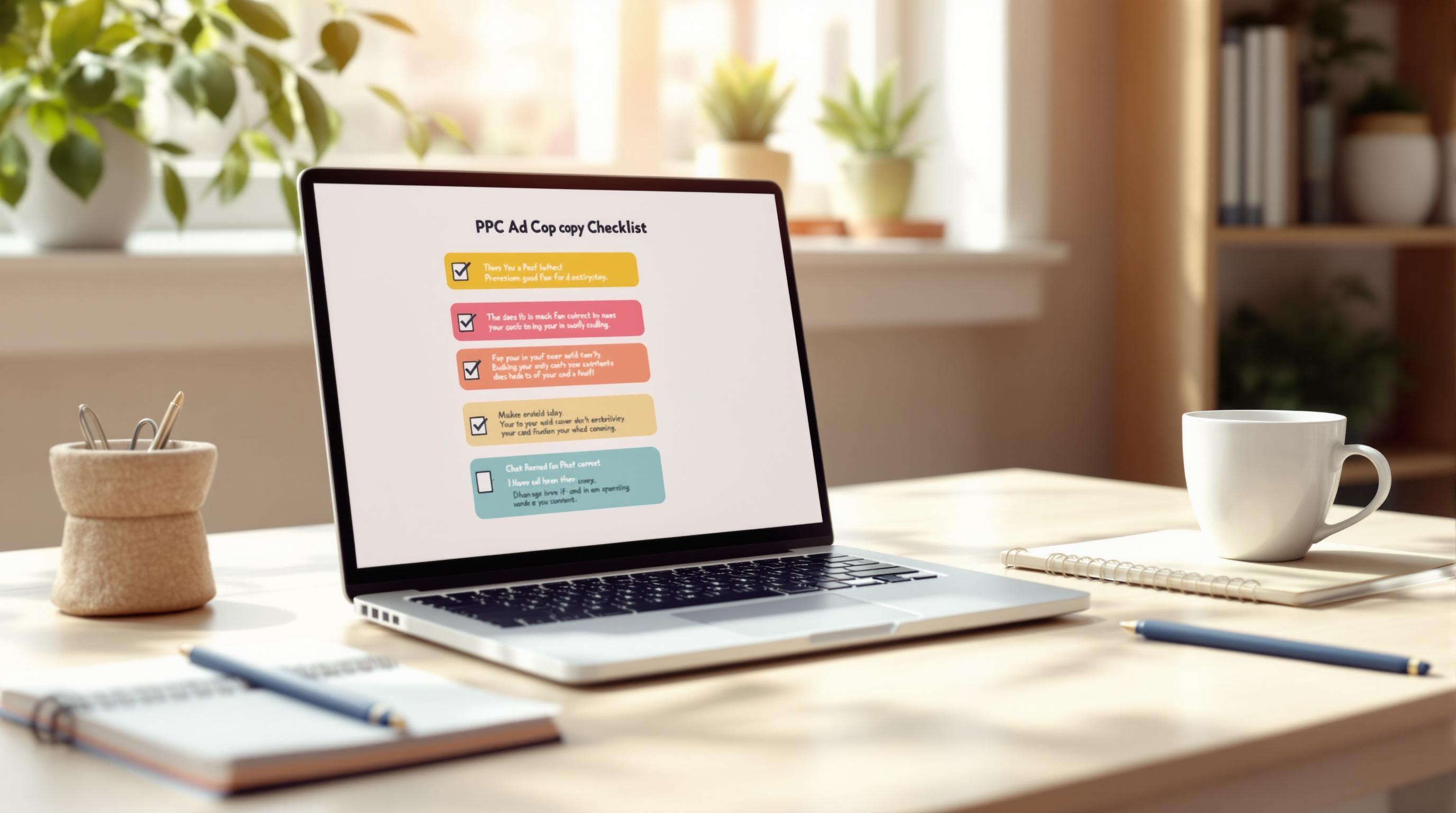Want to improve your PPC campaigns? Start by mastering cost per conversion. This critical metric tells you how much you're spending to get a customer action, like a sale or a lead. Here's what you need to know:
- What is Cost Per Conversion? It's your total ad spend divided by the number of conversions. Example: $5,000 ad spend / 200 conversions = $25 per conversion.
- Key Metrics to Watch: Click-through rate (CTR), cost per click (CPC), and return on ad spend (ROAS) all impact your conversion costs.
- Industry Benchmarks: E-commerce ranges $10–$20, while financial services can go up to $150.
- How to Lower Costs: Improve landing pages, refine keywords, and use automated bidding tools like Target CPA.
The goal? Balance your budget, maximize ROI, and hit your business targets. Let’s dive deeper into strategies and examples.
What is Cost Per Conversion?
Definition and Why It Matters
Cost per conversion tells you the average amount you spend to achieve a specific action in your PPC campaigns. This action could be anything you define as a "conversion" for your business - like a sale, a lead submission, or a registration.
To calculate it, divide your total campaign cost by the number of conversions. For example, if you spend $5,000 on a campaign and it generates 200 conversions, your cost per conversion is $25. Let’s say your product has a $50 profit margin. In this case, each sale from your PPC campaign brings in a 50% profit.
By understanding this metric, you can make smarter decisions about where to allocate your PPC budget and how to fine-tune your campaigns.
How It Connects to Other Metrics
Cost per conversion doesn’t work in isolation. It’s closely tied to other key metrics that help you evaluate your campaign’s performance:
| Metric | How It Relates to Cost Per Conversion |
|---|---|
| Click-Through Rate (CTR) | A higher CTR can lower cost per conversion by improving ad relevance. |
| Cost Per Click (CPC) | Directly influences the overall cost of each conversion. |
| Return on Ad Spend (ROAS) | Shows how profitable your campaigns are compared to your conversion costs. |
Industry benchmarks for cost per conversion vary. In e-commerce, it often ranges between $10-$20, while B2B businesses might see numbers above $50, reflecting their higher customer value. These benchmarks depend on factors like your industry, customer value, and the type of conversion you’re tracking.
When assessing your cost per conversion, think about your profit margins, customer lifetime value, and marketing goals. Understanding these connections can help you pinpoint areas to improve your campaigns and boost efficiency.
How to Calculate Cost Per Conversion
The Formula
To calculate cost per conversion, divide your total ad spend by the total number of conversions. For instance, if you spend $5,000 on a campaign that generates 250 conversions, your cost per conversion would be $20.
Key Influencing Factors
Several factors can impact your cost per conversion. By understanding these, you can better manage your PPC budget and meet your goals:
| Factor | Effect on Cost Per Conversion |
|---|---|
| Ad Quality Score | A higher score can lower costs per click, ultimately reducing conversion costs. |
| Landing Page Performance | Better-performing landing pages improve conversion rates, leading to lower costs per conversion. |
| Campaign Settings | Choices like targeting and bidding strategies affect both costs and conversion rates. |
| Seasonal Trends | Costs may rise during peak seasons, but higher conversion volumes can offset this. |
Industry Benchmarks
Here’s a quick look at typical cost per conversion ranges across industries:
| Industry | Typical Cost Per Conversion Range |
|---|---|
| E-commerce | $10–$20 |
| B2B Software | $50–$100 |
| Financial Services | $75–$150 |
| Education | $40–$60 |
When setting your targets, consider factors like:
- Your product's profit margin
- Customer lifetime value
- Marketing objectives
- The level of market competition
Using tools like Target CPA bidding can help you balance performance with cost control. While benchmarks are helpful, your ideal cost per conversion will depend on your specific business model and profitability goals.
Now’s the time to assess how your budget aligns with your performance targets.
Assessing and Allocating PPC Budgets
Analyzing Campaign Data and Performance
Historical data is key to understanding how your campaigns are performing. It helps you pinpoint which campaigns need more funding or adjustments. By examining performance over different time periods, you can uncover trends that guide smarter budget decisions.
Here are some important metrics to focus on:
| Performance Indicator | Suggested Action |
|---|---|
| Low Conversion Rate (<2%) | Improve ad copy and landing pages |
| High CPA (>2x target) | Revisit targeting and bidding strategies |
| Low ROAS (<1:1) | Adjust keyword relevance and match types |
Metrics don’t exist in isolation - how they interact often tells the full story. For instance, a higher CPC might be acceptable if it's balanced by a strong conversion rate and high customer lifetime value.
Budget Distribution Strategies
Once you’ve analyzed your campaign performance, you can use these strategies to allocate your budget effectively:
- Budget Estimation: Calculate your budget based on revenue goals. For example, if your goal is $15,000 in revenue, with a $75 average order value and a 4% conversion rate, you’d need to allocate $7,500 to ad spend [1].
-
Performance-Based Allocation: Focus more of your budget on campaigns that show:
- Lower CPAs compared to your targets
- Higher conversion rates
- Better ROAS
- Seasonal Optimization: Increase your ad spend during peak seasons to capture more conversions and revenue. Use historical data to figure out the best times to adjust your budget [2].
Optimizing Cost Per Conversion Budgets
Adjusting Bids
Here’s a quick guide to fine-tune your bids for better performance:
| Performance Indicator | Suggested Bid Adjustment |
|---|---|
| Keywords with >5% Conversion Rate | Increase bids by 10-15% |
| Keywords with <1% Conversion Rate | Lower bids or pause them |
| Mobile Ads with +20% CTR | Add positive device bid adjustments |
| Peak Converting Hours | Use dayparting to raise bids during these hours |
Making smart bid adjustments can help stretch your budget and get more out of every dollar spent.
Using Automated Bidding Tools
Manual adjustments are effective, but automated tools can take things to the next level. Strategies like Target CPA (covered earlier) can help fine-tune your campaigns with minimal effort.
To get the best results:
- Aim for at least 30 conversions in 30 days to give the system enough data.
- Allow 2–3 weeks for the learning phase to stabilize.
- Keep budgets consistent during this period.
- Check performance weekly to spot trends or issues.
Remember, Smart Bidding relies on machine learning, so it needs time to gather and analyze data for optimal outcomes.
Using the Top PPC Marketing Directory

If you want to maximize your cost-per-conversion efforts, specialized tools can make all the difference. The Top PPC Marketing Directory is a go-to resource, offering tools for bid management, A/B testing, performance tracking, and landing page optimization.
Companies like AnswerForce and Sticky Bunny have used tools from this directory to drive up conversions while keeping costs in check [1].
sbb-itb-89b8f36
Monitoring and Refining Budgets Over Time
Setting Up Conversion Tracking
Set up conversion tracking to collect data on all important actions - everything from primary goals like sales to smaller engagement actions, often called micro-conversions. Focus on the key points in your conversion path to get a clear picture of user behavior. This ensures you gather accurate data, which is crucial for fine-tuning your budget.
Conducting Regular Performance Reviews
Review your campaign performance consistently. Pay close attention to metrics like cost per conversion, conversion rate, and ROAS (Return on Ad Spend). If you notice big changes, such as a 15% spike in CPA or a drop in ROAS below your target, take action quickly to keep your campaigns efficient. These reviews give you the insights needed to adjust budgets wisely and maintain cost-effectiveness.
Making Iterative Budget Adjustments
Fine-tune your budgets with small, calculated changes - around 10-15% - and track the results for at least two weeks before making further tweaks. Factor in seasonal patterns and use tools that can automatically balance your budget over time. Keep a record of all changes and their outcomes to guide future decisions.
Key tips for budget optimization:
- Start with cautious adjustments to avoid unnecessary risks.
- Watch performance closely before introducing further changes.
- Use past data to plan for seasonal shifts in spending.
- Leverage automation tools to ensure steady performance.
Conclusion and Key Takeaways
Key Points Recap
Managing your cost per conversion budget effectively requires a strategy rooted in data analysis and consistent adjustments. By regularly reviewing performance metrics, you can uncover areas for improvement and allocate resources more effectively.
| Metric | Importance |
|---|---|
| Cost Per Conversion | Directly influences ROI |
| Conversion Rate | Reflects campaign efficiency |
| ROAS | Indicates campaign profitability |
These metrics serve as your guideposts for refining cost per conversion budgets.
Final Recommendations
To make the most of your budget:
- Leverage automated bidding strategies that align with your conversion goals.
- Begin with small adjustments - around 10-15% - and track performance over two weeks.
- Use automation tools to enable real-time budget optimization.
For more advanced tools and expert services, check out the Top PPC Marketing Directory to take your campaigns to the next level.
Formula for Solving Breakeven Cost per Conversion in Campaigns
FAQs
Understanding cost per conversion is crucial for making smart budget choices. Here are answers to some common questions marketers often have.
What is a good cost per conversion rate?
What qualifies as a "good" cost per conversion depends heavily on your industry and campaign goals. Research from WordStream shows these averages:
| Campaign Type | Average Cost |
|---|---|
| Search Ads | $48.96 |
| Display Ads | $75.51 |
Your target cost per conversion should align with your profit margins and overall business objectives. For example, businesses selling high-value products with large profit margins can sustain higher conversion costs while still staying profitable.
How can you lower your cost per conversion?
Reducing your cost per conversion often comes down to making smarter decisions and optimizing key areas. Here's how:
- Refine Your Keywords: Regularly analyze keyword performance. Keep the ones that convert well and pause or remove underperforming ones. Use negative keywords to block irrelevant searches.
- Enhance Landing Pages: Ensure your landing pages load quickly, are mobile-friendly, and have clear, compelling calls-to-action that match the promises in your ads.
- Adjust Ad Scheduling: Use performance data to focus your budget on times when conversions are most likely to happen.
For even more refined strategies, you might want to look into PPC management tools that can help automate and improve your optimization efforts.


